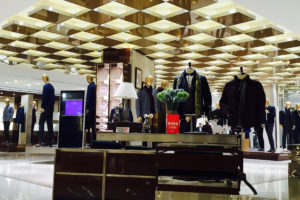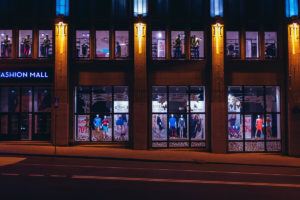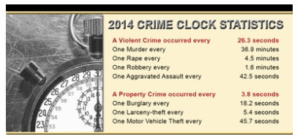 A good loss prevention plan starts with focusing on the basics. One of the basics is to monitor high risk merchandise. For a variety of reasons some items are stolen more often than others. It makes sense that they should be given extra attention and protection.
A good loss prevention plan starts with focusing on the basics. One of the basics is to monitor high risk merchandise. For a variety of reasons some items are stolen more often than others. It makes sense that they should be given extra attention and protection.
But, simple as the idea sounds, the problem is in details. Retailers can have difficulty identifying high risk goods and the reasons why they’re being stolen. Ronald Clarke – a criminologist with Rutgers University – developed the acronym CRAVED to help them identify what kinds of goods are vulnerable to theft and why.
Concealable. Items that are easily hidden (pockets, bags, purses, coats) are susceptible to theft, especially if they’re difficult to identify after concealment. Once it’s in a purse, you’d better be very sure you can prove the customer didn’t come in with that lip gloss. This is why cigarettes and baby formula are sold as they are now. They used to be out in the open, easy to remove and conceal.
Removable. For most shoplifters the item must be easy to remove and portable. There’s a reason laptops are stolen more often than PCs. It’s easier to take a T-shirt from the front of the store, rather than the back where the sales people always stand and talk.
Available. These are goods that are easy to find and commonly available. Christmas ornaments are stolen during the holidays more than any other time, including in stores that carry them year round.
Valuable. The value of the product can be monetary or status driven. Real diamond bracelets are kept in locked display cases, while the glass ones are on top. That is until they are trendy, become a target for theft, and have to be moved behind the counter until the trend stops.
Enjoyable. Many of the standard, frequently stolen products (i.e. tobacco, liquor, electronics, jewelry, make-up) are linked to personal satisfaction. They’re usually the ones which are enjoyable to own or consume. Or used for something that’s considered enjoyable to consume, such as ingredients used to manufacture methamphetamine.
Disposable. Getting rid of merchandise, without being caught, used to be a big problem for thieves. Now with the ease of selling via the Internet professional shoplifters are targeting products which weren’t easy to get rid of in the past – no more selling out of a car trunk.
Easily disposable isn’t just important for expensive items, disposable razors and batteries are some of the most frequently stolen products. They can be quickly and easily sold or bartered to neighbors, friends and family.
Some goods will always be a target for theft, while others are just a passing consumer fancy. Either way it makes employees’ and managers’ jobs easier if they know what to look for and why it’s happening. People are more willing to commit to and follow loss prevention policies if they understand why they’re needed and what they hope to accomplish.
Nicole Abbott is a professional writer who’s had over 200 articles published. She’s a business consultant and former psycho-therapist with over 20 years of experience in mental health, business and addiction. She’s a coach, lecturer, trainer and facilitator. She has conducted over 200 workshops, trainings, presentations, seminars and college classes.






 If you work in retail then you know theft is a big problem. The theft of supplies, merchandise, time and money are just a few of the things managers have to deal with daily. They have to address it on many fronts (i.e., impulse and professional shoplifters, employees and their friends and families, vendors).
If you work in retail then you know theft is a big problem. The theft of supplies, merchandise, time and money are just a few of the things managers have to deal with daily. They have to address it on many fronts (i.e., impulse and professional shoplifters, employees and their friends and families, vendors). A woman is fired by a grocery store chain after merging with another chain, and changing their shoplifting policy because she chased a shoplifter. Employees at the biggest retail store chased and killed a shoplifting man and now they faced murder charges.
A woman is fired by a grocery store chain after merging with another chain, and changing their shoplifting policy because she chased a shoplifter. Employees at the biggest retail store chased and killed a shoplifting man and now they faced murder charges.
